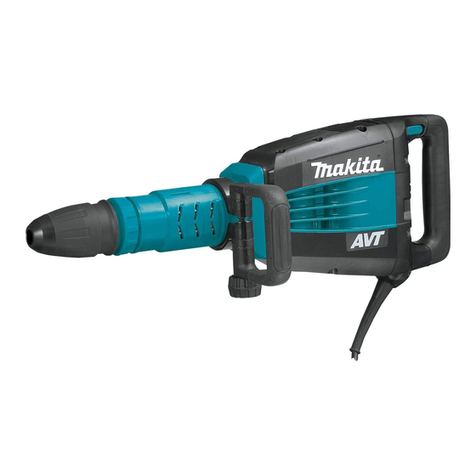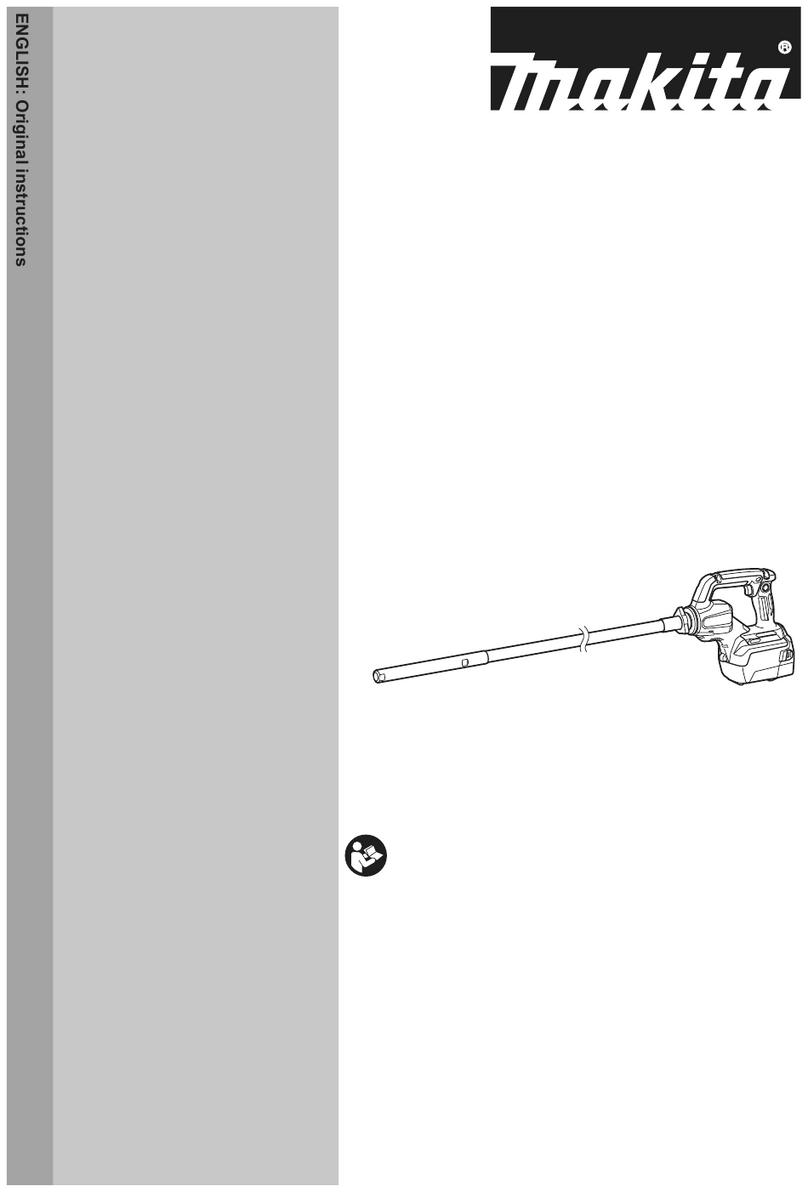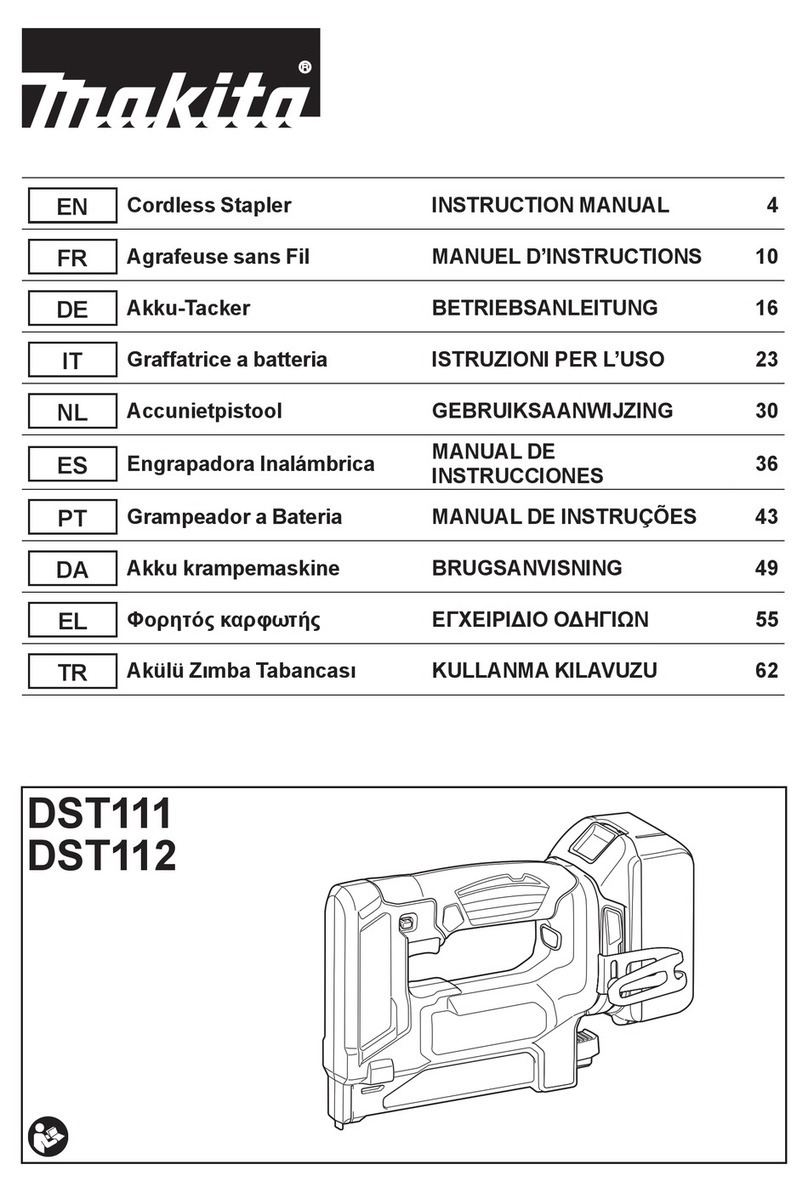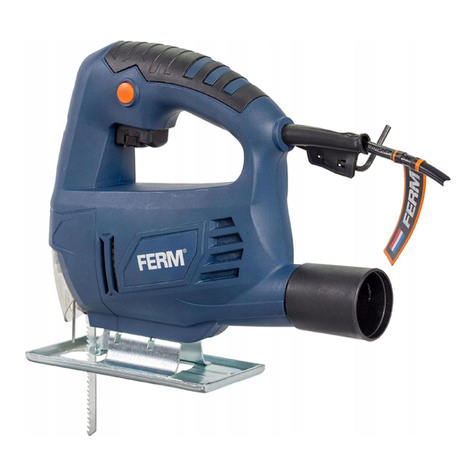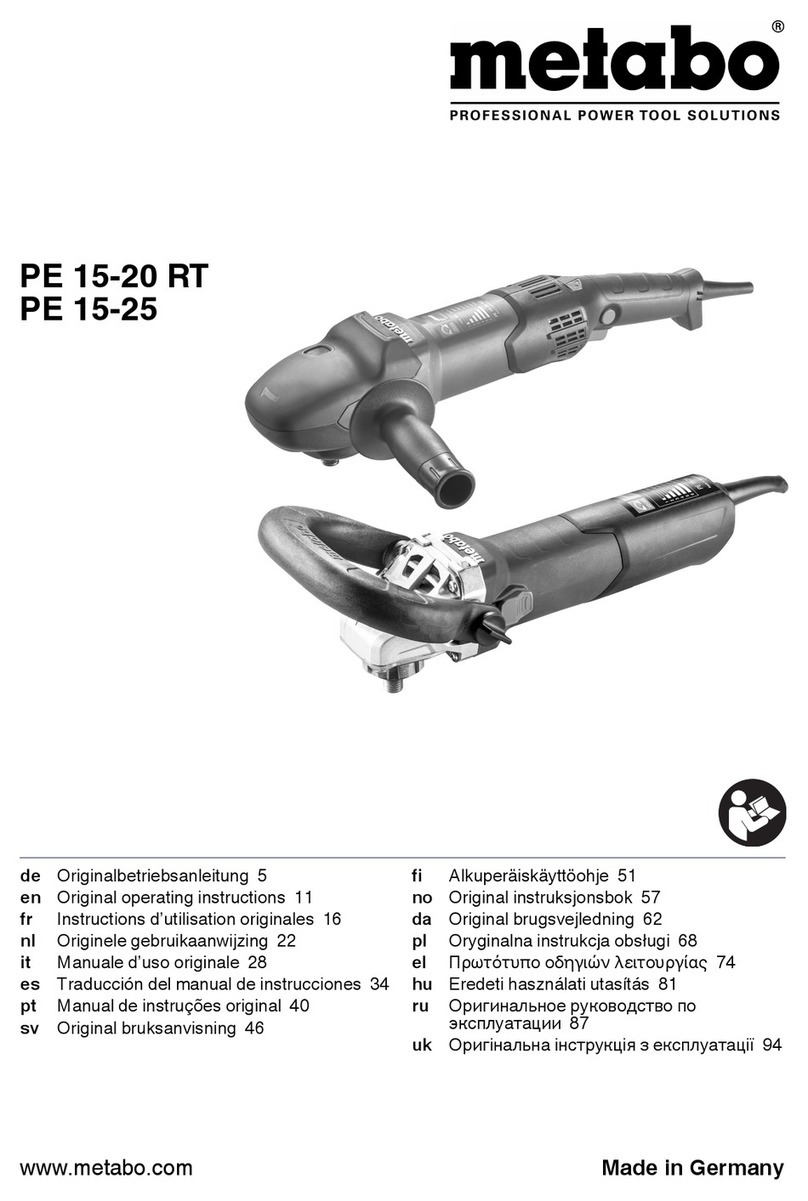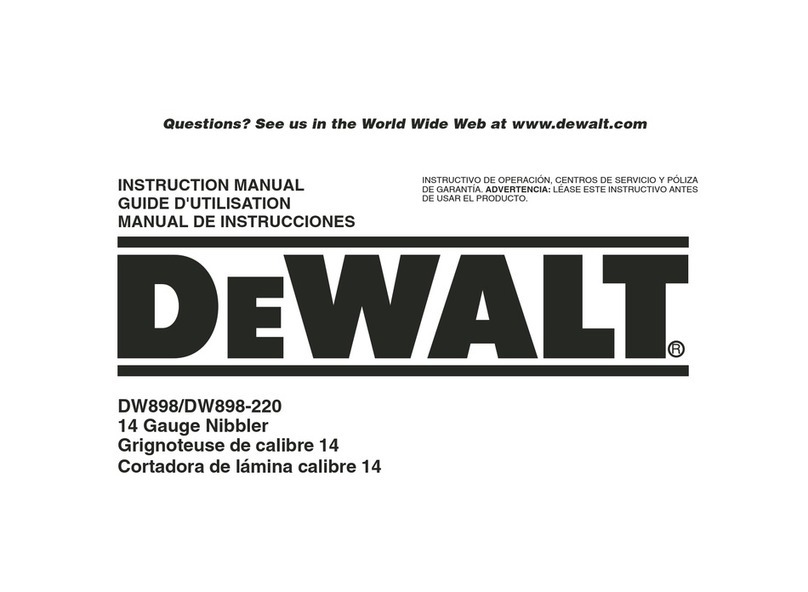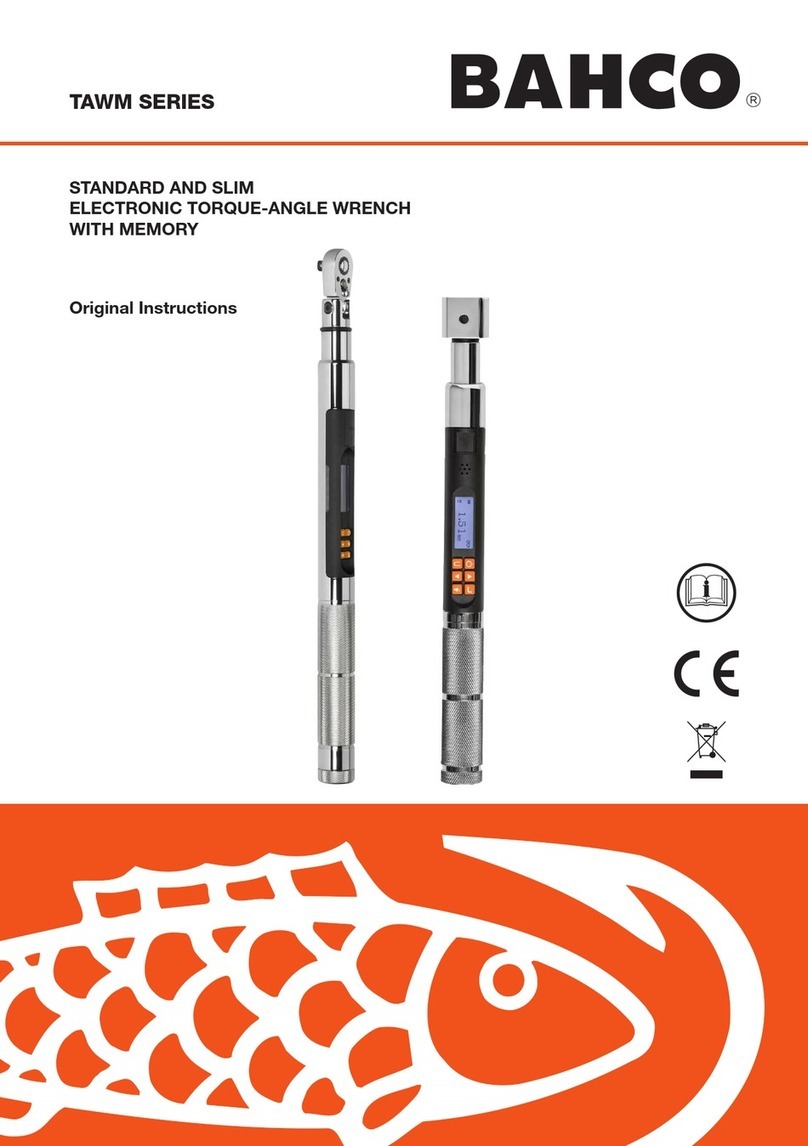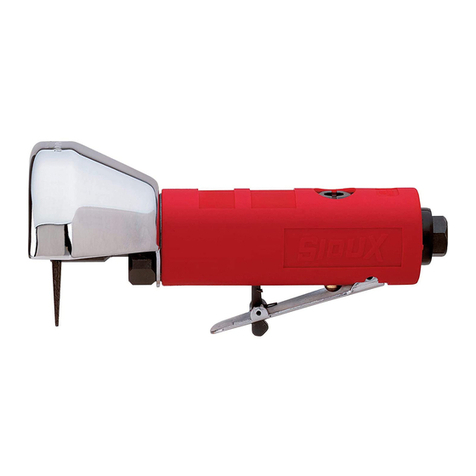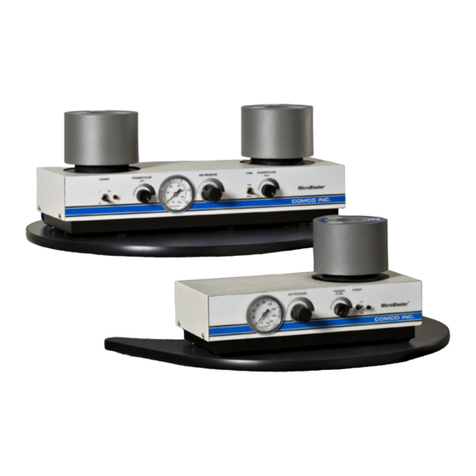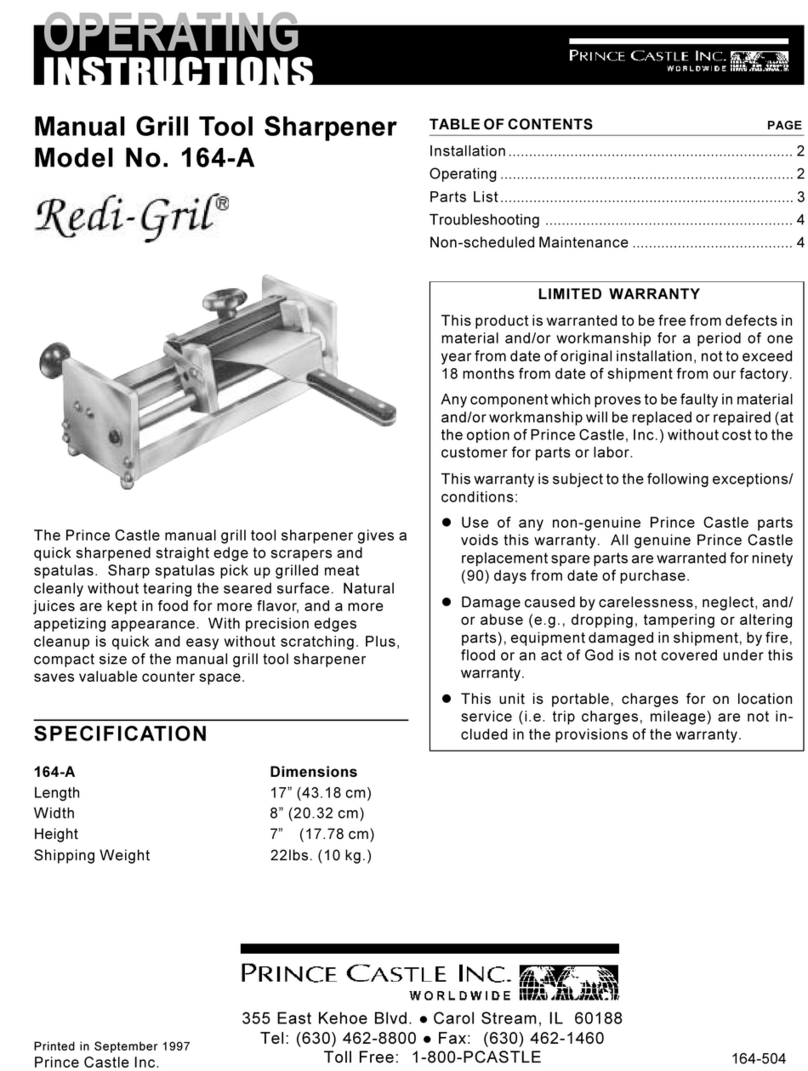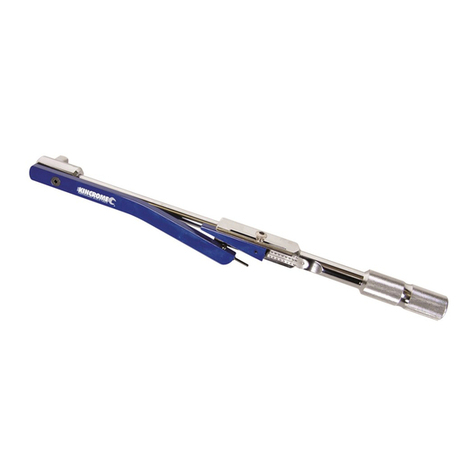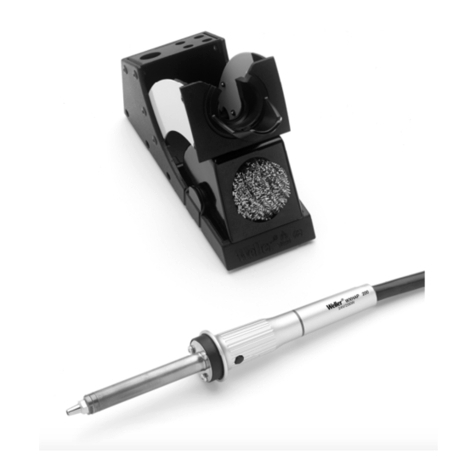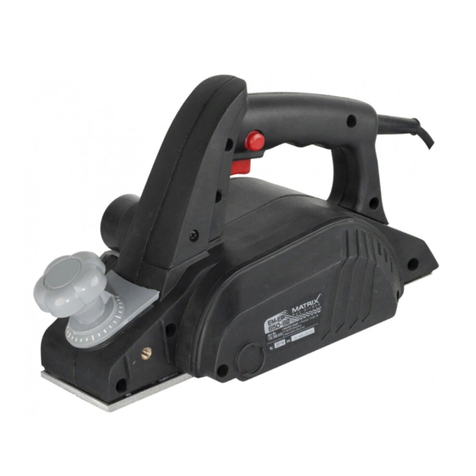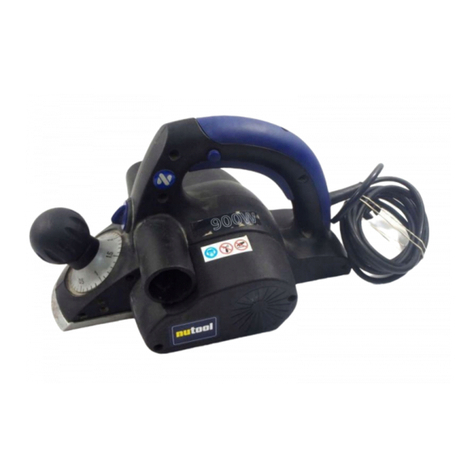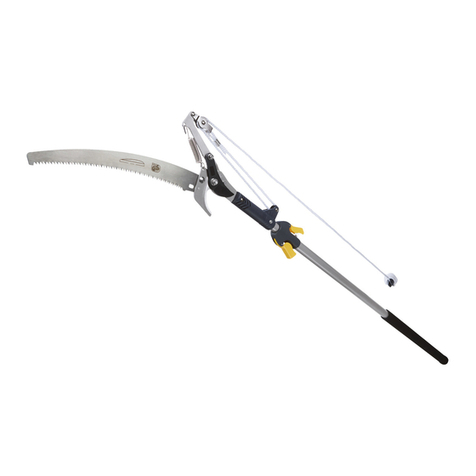Makita BJS160 Manual

PRODUCT
P 1/ 9
Model No.
Description
CONCEPT AND MAIN APPLICATIONS
BJS160, BJS161
Cordless Straight Shears 1.6mm (16Ga)
Specification
Standard equipment
Optional accessories
Center blade
Side blade (L)
Side blade (R)
Charger DC18SD
Charger DC24SA (for North America only)
Charger DC24SC (for all countries except North America)
Battery BL1430 (for BJS160 only)
Battery BL1830 (for BJS161 only)
Fast charger DC18RA
Note: The standard equipment for the tool shown above may vary by country.
Hex wrench 3 ................... 1
Thickness gauge ............... 1
These products will be available in the following variations.
All models also include the accessories listed below in "Standard equipment".
Dimensions: mm (")
Width (W)
Height (H)
Length (L) 362 (14-1/4)
78 (3-1/16)
103 (4-1/16) 118 (4-5/8)
BJS160 BJS161
L
H
W
BJS160
BJS161
Models BJS160 and BJS161 are DC straight shears developed with the same
design concept as our AC straight shear JS1660.
BJS160 is powered by 14.4V/3.0Ah Li-ion battery BL1430, and BJS161 is
powered by 18V/3.0Ah Li-ion battery BL1830. Their main features are:
Compact and lightweight design for easy handling and high maneuverability
Straight design provides more control and high maneuverability
for easy cutting operation.
High cutting performance
Note: 1.3Ah Li-ion battery BL1415/ BL1815 cannot be used for BJS160/ BJS161.
*Weight according to EPTA-Procedure 01/2003, including battery
Battery
Max cutting capacities:
mm (Ga)
Stainless steel with tensile
strength up to 600N/mm2
Cell
Voltage: V
Capacity: Ah
Li-ion
14.4 18
3.0
Net weight*: kg (lbs) 1.9 (4.2) 2.0 (4.4)
1.2 (18)
Aluminum with tensile
strength up to 200N/mm22.5 (12)
Mild steel with tensile
strength up to 400N/mm21.6 (16)
No load speed: min-1=spm (strokes per minute) 4,300
Max output (W)
Minimum cutting radius: mm (") 250 (9-7/8)
Overload protection by current limiter Yes
280 350
Specification Model BJS160 BJS161
22 with DC18RACharging time (approx.): min.
BJS160RFE
BJS160Z
BJS160
Model No. Offered to
All countries
USA, Canada, Mexico, Panama
All countries except the four listed above
BL1430
(Li-ion 3.0Ah) DC18RA
No No No
type quantity Charger
Yes
No
Plastic
carrying case
2 1
Battery Battery
cover
BJS161RFE
BJS161Z
BJS161
Model No. Offered to
All countries
USA, Canada, Mexico, Panama
All countries except the four listed above
BL1830
(Li-ion 3.0Ah) DC18RA
No No No
type quantity Charger
Yes
No
Plastic
carrying case
2 1
Battery Battery
cover
BJS160
BJS161
T
ECHNICAL INFORMATION

P 2/ 9
Repair
CAUTION: Remove the Battery from the machine for safety before repair/ maintenance
in accordance with the instruction manual!
[1] NECESSARY REPAIRING TOOLS
[2] LUBRICATIONS
[3] DISASSEMBLY/ASSEMBLY
[3]-1. Center blade
Fig. 1
Fig. 2
Code No. Description Use for
1R036 Description Holding Helical gear 34 when removing Crank shaft
1R269 Bearing extractor (small) Removing Ball bearings
1R366 Thickness gauge Adjusting the gap between Center blade and Side blades
Item No.
Apply Makita grease FA.No.2 to the following portions designated in the black triangle to protect parts
and product from unusual abrasion.
And to the portion designated in gray triangle, apply the lubricant VG100.
Description
17 18
Sealing screw
Rod
Link
Dust cover
(1) Disassemble the shearing mechanism from Crank housing complete as illustrated in Fig. 2.
Center blade
32
25
Portion to lubricate
DISASSEMBLING
Pin 7
17 18 Pin 5
25 Pin 7
32 Helical gear 34
Drum portion for smooth action of Center blade and Rod
Drum portion for smooth action of Center blade.
Teeth portion for smooth engaging with Armature’s gear
Pay attention not to lose the above
washers when removing shearing
mechanism.
Remove four 4x50 Tapping
screws and separate Crank
housing complete.
Remove Stop ring E-4 from Pin 7.
And then remove Pin 7 toward the
opposite side of Stop ring E-4.
Remove the shearing mechanism
from Crank housing complete
by hand.
Stop ring E-4
a Thin washer 7
b Teflon washer 7
a
b
Shearing
mechanism
Makita grease FA.No.2
Makita grease FA.No.2
a little
a little
Lubricant Amount
30g
VG100

[3] DISASSEMBLY/ASSEMBLY
[3]-1. Center blade (cont.)
DISASSEMBLING
ASSEMBLING
Flat washer 5
Center blade
Pin 5
Center blade Dust Cover
Fig. 2
Fig. 3
Fig. 4
Fig. 5
(2) Disassemble the shearing mechanism from Crank housing complete as illustrated in Fig. 2.
(3) Center blade can be disassembled from the Shearing mechanism as illustrated in Fig. 3.
(1) Assemble the Shearing mechanism as illustrated in Figs. 4 and 5.
Pin 7
Pay attention not to lose the above
washers when removing shearing
mechanism.
Remove four 4x50 Tapping
screws and separate Crank
housing complete.
Remove Stop ring E-4 from Pin 7.
And then remove Pin 7 toward the
opposite side of Stop ring E-4.
Remove the shearing mechanism
from Crank housing complete
by hand.
Stop ring E-4
a Thin washer 7
b Teflon washer 7
a
b
Shearing
mechanism
Dust cover (sponge made) has to be assembled
to Center blade as illustrated left.
Center blade
Center blade
Center blade
Dust cover
Dust cover
Dust cover
<Correct> <Wrong>
Flat washer 5
Flat washer 5
Link
Pin 5
Pin 5
Link
Assemble Center blade and two
Flat washers to Link as illustrated
left.
P 3/ 9
Repair

[3] DISASSEMBLY/ASSEMBLY
[3]-1. Center blade (cont.)
ASSEMBLING
ASSEMBLING
Fig. 5
Fig. 6
Fig. 7
Dust cover
Note: Refer to Fig. 3
and assemble
the components.
Thin
Washer 7
Side blade R
Stop ring E-6
Pin 7
Pin 7
Pass Pin 7 through Crank housing
complete from Side blade R side
as illustrated above.
Secure the Pin 7 with
Stop ring E-4.
Teflon wsher 7
Center Blade
Set Thin washer 7 to the both side
of Center blade.
Set Teflon washer 7 to the outside
of Thin washer 7 as illustrated above.
Crank housing
complete
(2) Mount the assembled Shearing mechanism to Crank housing complete as illustrated in Figs. 5 and 6.
And, assemble the Crank housing complete to Housing set. Refer to the right illustration in Fig. 2.
Crank housing complete
Stop Ring E-4
[3]-2. Side blade R, L
DISASSEMBLING
M5x10 Hex scket
countersunk screw Remove M5x10 Hex Socket countersunk screw.
Side blade R, L can be removed.
Spacer is mounted between Side blade L and
Slip plate L.
Side blade R
Side blade L
Side blade section can be disassembled as illustrated in Fig. 7.
Referr to Fig. 7 and assemble Side blade section. Do not forget to assemble Spacer under the Side blade L.
Spacer
Slip plate L
Slip plate R
P 4/ 9
Repair

[3] DISASSEMBLY/ASSEMBLY
[3]-3. Helical gear 34, Ball bearings 627DDW, 6000ZZ, 696ZZ
ASSEMBLING
Fig. 8
Fig. 9
Fig. 10
Remove the above illustrated Ball bearings with 1R269, then put
Helical gear 34 on 1R036 to remove Crank shaft.
Center blade section
Ball bearing 627DDW
Ball bearing 6000ZZ
(1) Disassemble the shearing mechanism from Crank housing complete as illustrated in Fig. 2.
(2) Disassemble Center blade section as illustrated n Fig. 8.
DISASSEMBLING
Ball bearing 696ZZ
Ball bearing
627DDW
Ball bearing
6000ZZ
Ball bearing
6000ZZ
Ball bearing
627DDW
Ball bearing 696ZZ
Flat
washer 7
Link
Ball bearing
696ZZ
1R036
Helical gear 34
Helical
gear 34
Sealing screw
Do not face the tall stepped drum side
to Helical gear 34, when mounting
Sealing screw.
Do not forget to mount
Flat washer 7 between Ball
bearing 6000ZZ and
Ball bearing 627DDW.
Sealing screw
Sealing screw
Flat washer 7
Helical gear 34
Crank Shaft
Crank shaft
Helical gear 34
(3) Disassemble Ball bearings and remove Crank shaft from Sealing screw and Helical gear 34 as illustrated in Fig. 9.
(1) Assemble Helical gear 34, Sealing screw and Ball bearings to Crank shaft. and fit the assembled Ball bearing 6000ZZ
to Link as illustrated in Fig. 10.
Sealing screw
Crank shaft
P 5/ 9
Repair

[3] DISASSEMBLY/ASSEMBLY
[3]-4. Armature
Fig. 11
DISASSEMBLING
ASSEMBLING
(1) Disassemble Armature as illustrated in Fig. 11.
Remove Holder cap and Carbon brush from the both side
of Housing.
And then separate Crank housing and Gear housing from
Housing set by removing four 4x50 Tapping screws.
Holder cap cover
Take the disassembling step in reverse. Refer to Fig. 12.
Crank housing
Brush holder cap
Pull off Armature from Housing set.
Remove Holder cap cover from Housing set
by levering up it with Slotted screwdriver.
Gear housing
Housing set
Carbon brush
Armature
P 6/ 9
Repair

[4] ADJUSTMENT
[4]-1. Side blades, Center blade
Fig. 13
Fig. 12
Gaps between Center blade and Side blades are defined depending on the thickness of the work piece.
Chose up two Thickness gauges from 1R366 for adjustment of the gaps referring to the following table.
(1) Loosen M6x10 Hex socket set screw, as illustrated in Fig. 12.
(2) Adjust the gaps by inserting 1R366 into the gap A and B, and turning M4x25 Hex socket head bolt as illustrated
in Fig. 13.
(3) After adjusting the gaps, tighten M6x10 Hex socket set screw with Hex wrench 3. Refer to Fig. 12.
Side blade L
Side
blade L Inserting the selected Thickness gauges into the gap A,
turn M4x25 Hex socket head bolt with Hex wrench 3
until the gap A can be adjusted to the required size.
In the same way, adjust the gap B. (almost same size to
Gap A)
Center blade
Center blade
Side blade R
Side
blade R
Thickness of
Work piece (mm)
less than 0.8
more than 1.3 0.1 + 0.2
0.1 0.04 + 0.06
0.8 - less than 1.3 0.2
0.3
0.05 + 0.15
Required gap between
A and B (mm)
Combination of
Thickness gauge
AB
M6x10 Hex socket
set screw
(on Side blade Rside)
Hex wrench 3
Loosen M6x10 Hex socket set screw
by turning with Hex wrench 3 approx.
360 degrees.
But, do not remove this screw.
1R366
Thickness gauge
M4x25 Hex socket
head bolt
(on Side blade Lside)
P 7/ 9
Repair

Circuit diagram
Wiring diagram
Color index of lead wires' sheath
Black
Red
Controller
Terminal Connector
Switch
Endbell
Complete LED Circuit
Fig. D-1
Fig. D-2
Endbell
complete
Switch Switch knob
Bearing box
portion
Lead wire
holder portion
Lead wire holder portion has to be located
on the opposite side of Switch lever.
Otherwise, the trouble in wiring arises.
Bearing box portion has to be faced to the Switch side.
Otherwise, the trouble may arise when assembling
Armature.
Switch lever
P 8/ 9

Wiring diagram
Switch
Fix the Lead wires of LED circuit
with this Lead wire holder.
Switch
viewed from Housing L side
Insulated
connector
Switch lever
Endbell
complete
Housing L
Pass the Lead wires between
Housing L and Controller.
Terminal
Controller
Switch knob
Space for
Yoke Unit
LED circuit
Connect Insulated connectors to Switch, facing their wire
connecting portions to the opposite side of Switch button.
Fig. D-3
Switch button
Wire connecting
portion
Put the Lead wires in Housing set L as illustrated in Fig. D-3.
Wire Connecting
Portion
Flag
Connector Terminal
Mark of Poles
The Flag connector has to be so connected,
that its wire connecting portion is located
over the mark of + - poles.
Rib of Housing (L)
Notch of Yoke unit
Assemble Yoke unit while fitting its notch
to the Rib of Housing set (L).
Yoke unit
P 9/ 9
Other manuals for BJS160
6
This manual suits for next models
1
Table of contents
Other Makita Power Tools manuals

Makita
Makita 5094D User manual
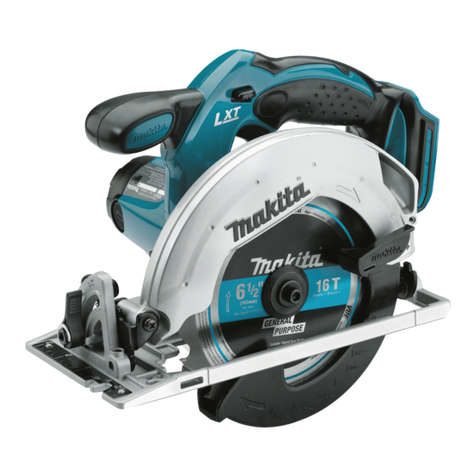
Makita
Makita BSS611 User manual
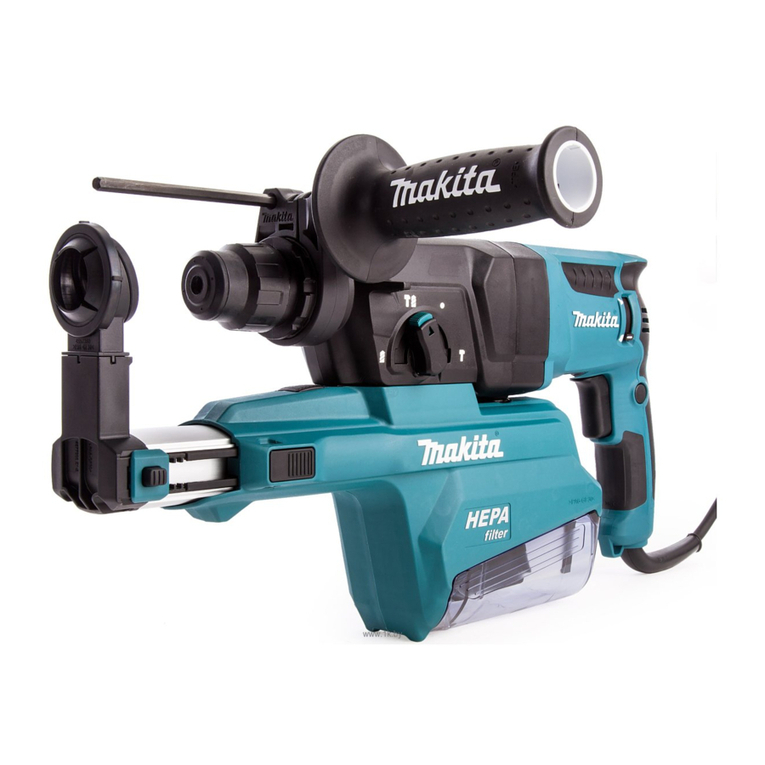
Makita
Makita HR2652 User manual
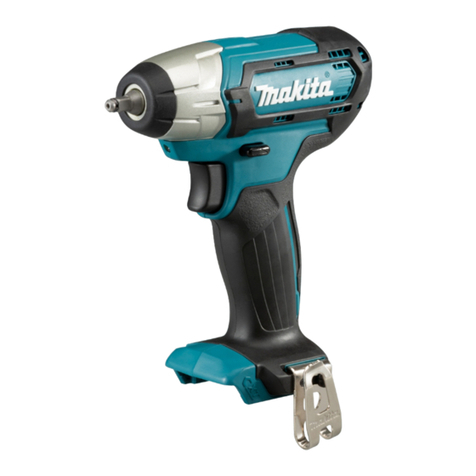
Makita
Makita TW060DSAE User manual

Makita
Makita DTW701 User manual
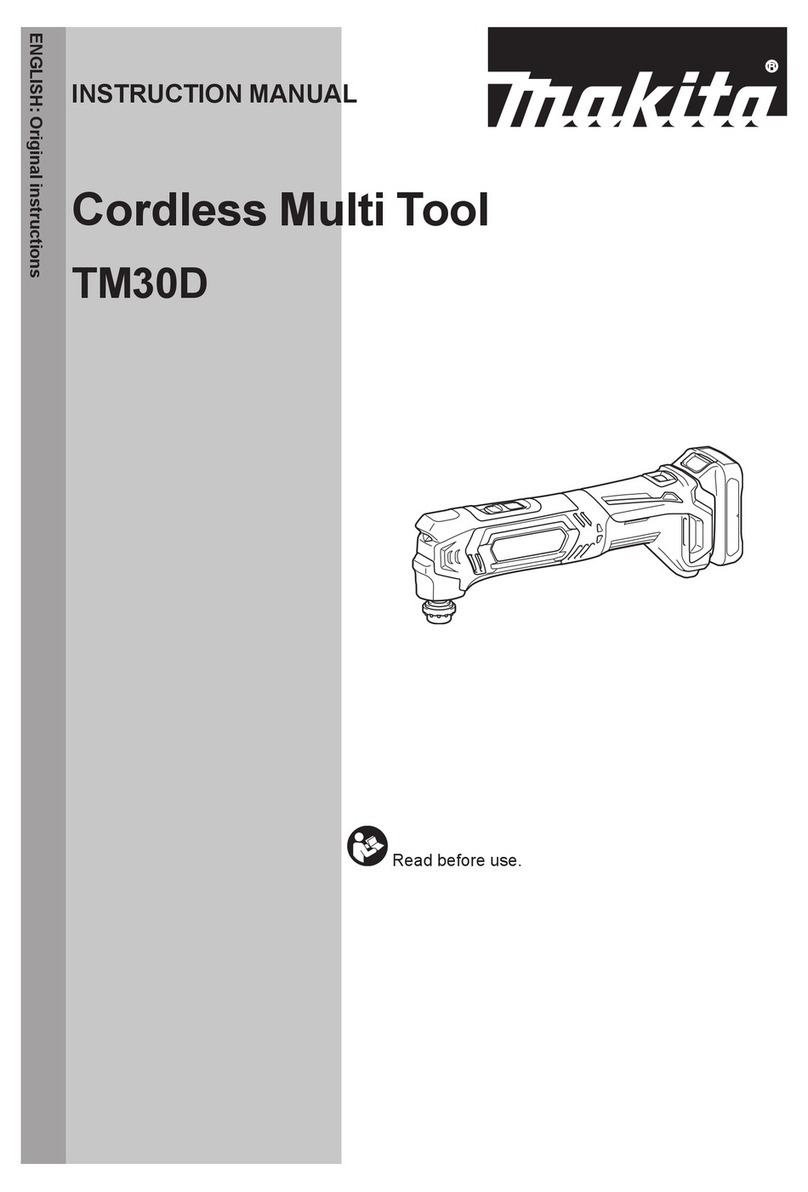
Makita
Makita TM30D User manual
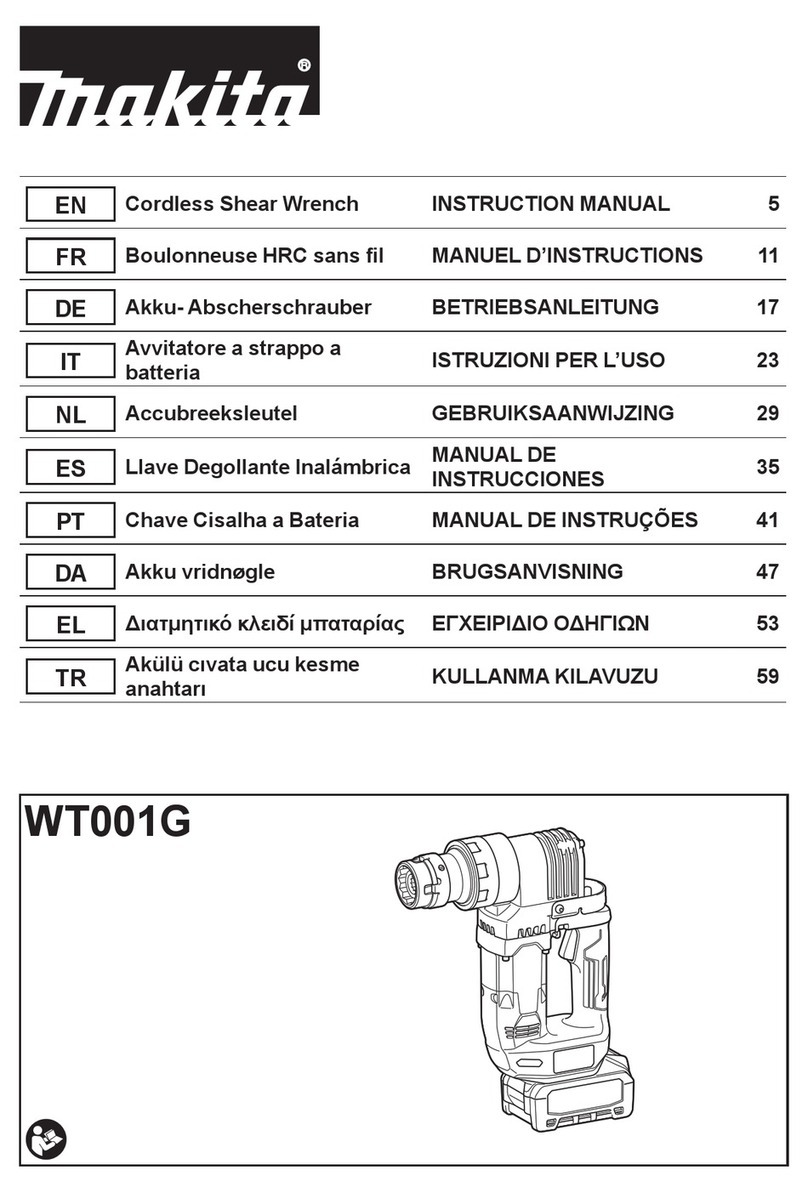
Makita
Makita WT001G User manual

Makita
Makita Makstar BVR340 User manual
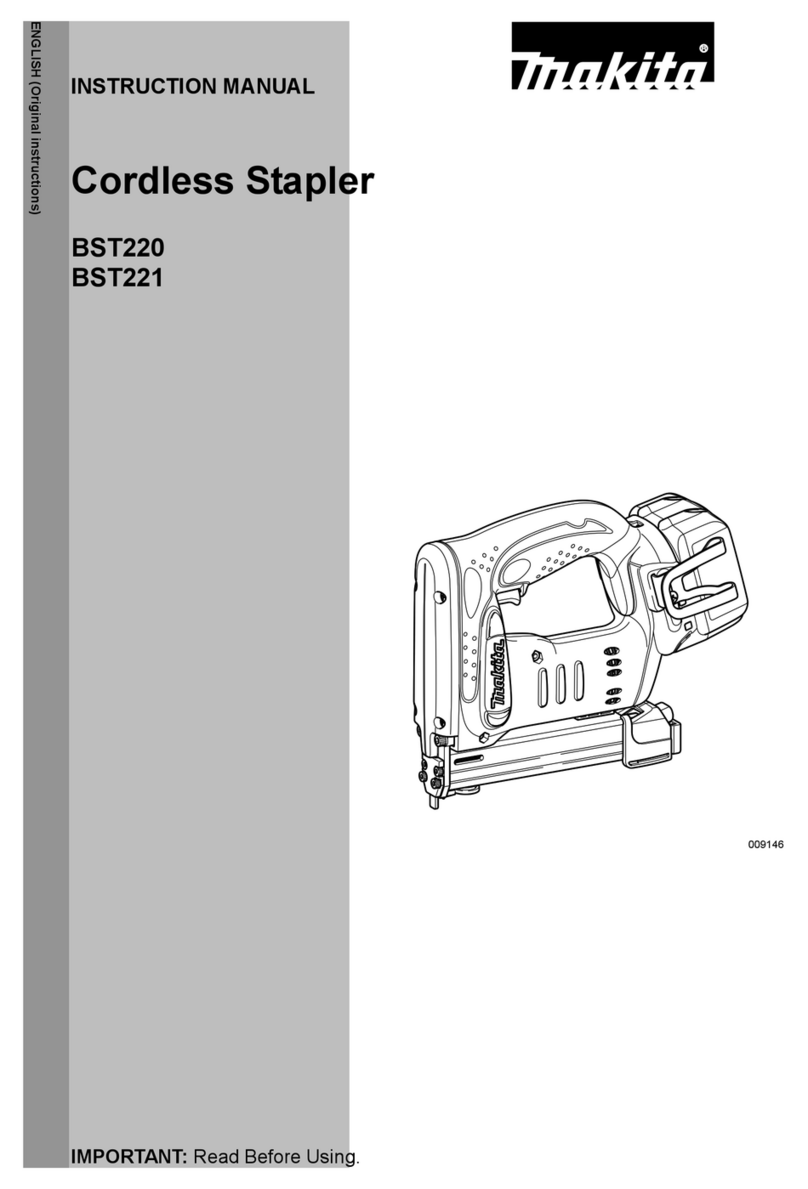
Makita
Makita BST220 User manual

Makita
Makita DHS782 User manual
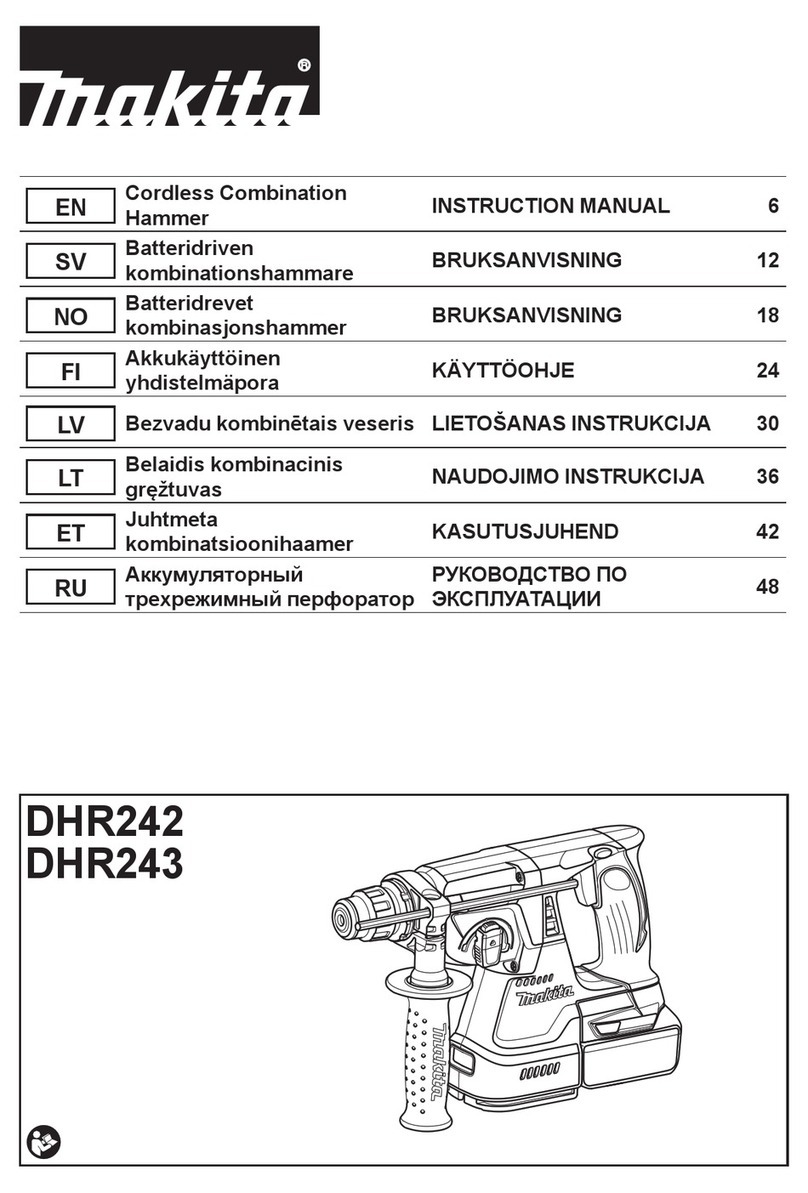
Makita
Makita DHR242 User manual
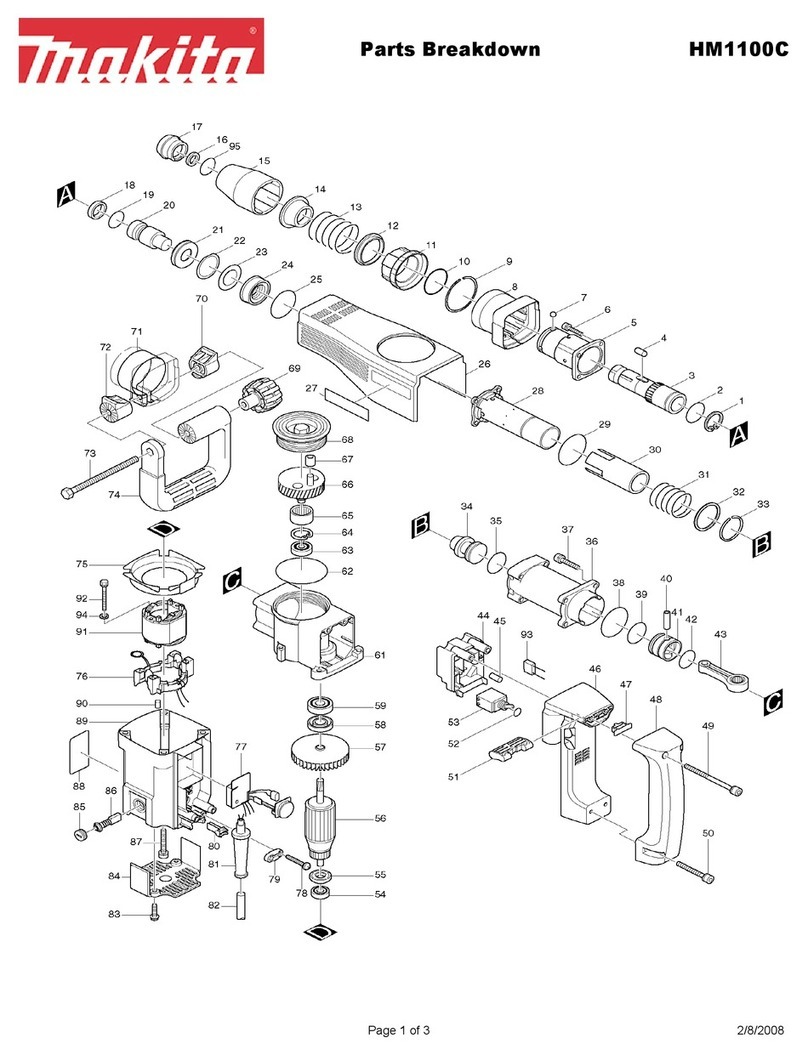
Makita
Makita HM1100C Quick start guide
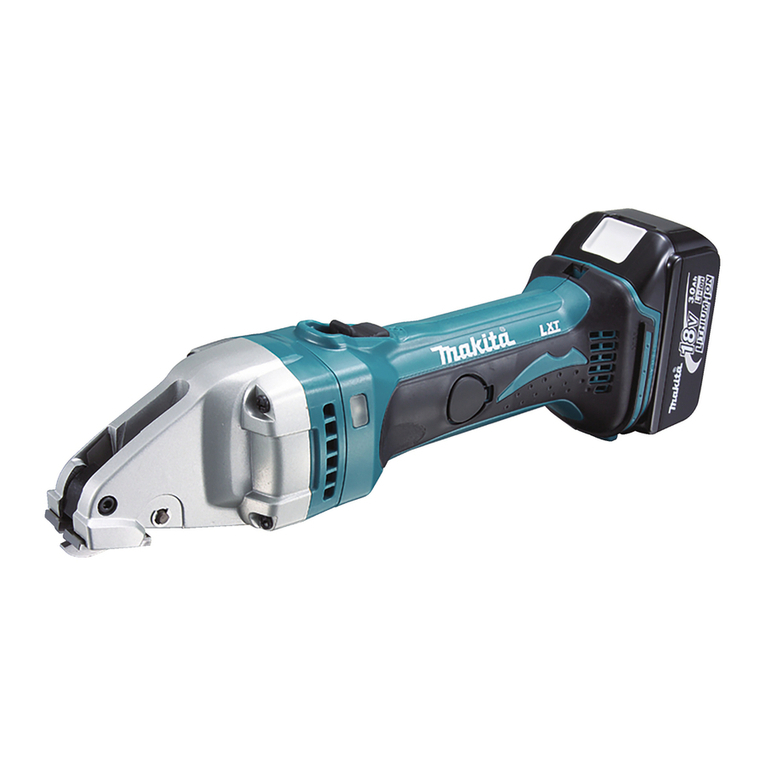
Makita
Makita DJS160 User manual
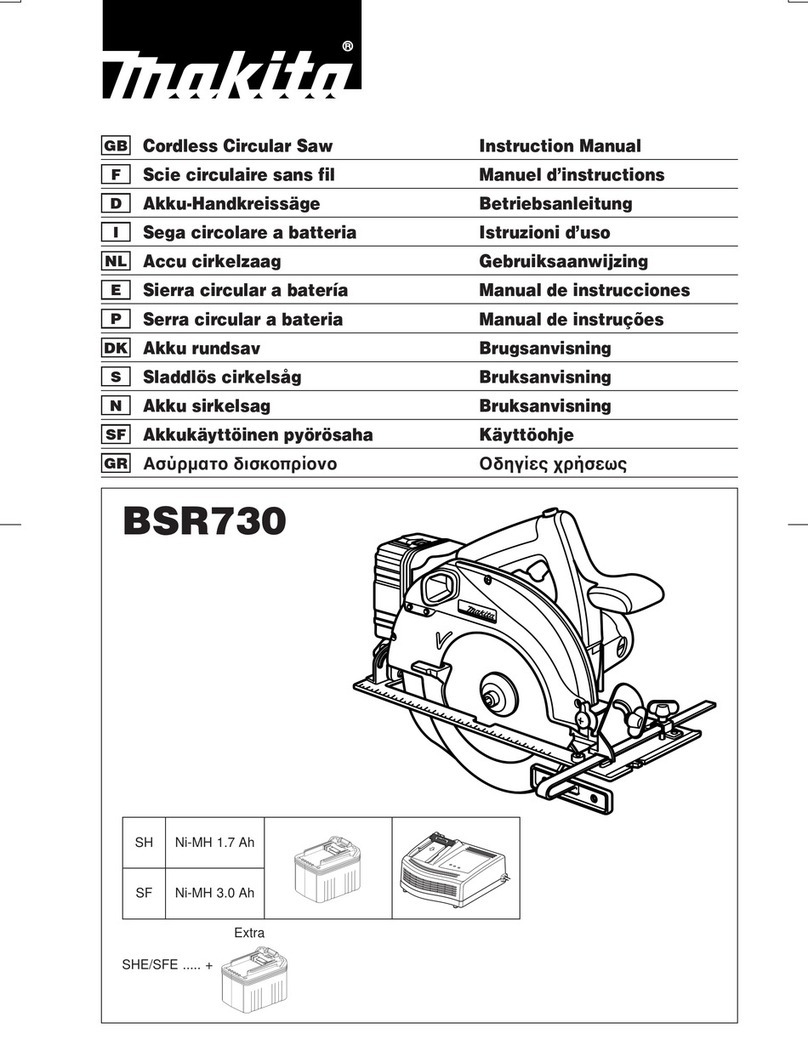
Makita
Makita BSR730 User manual

Makita
Makita TW007G User manual

Makita
Makita HM1802 User manual
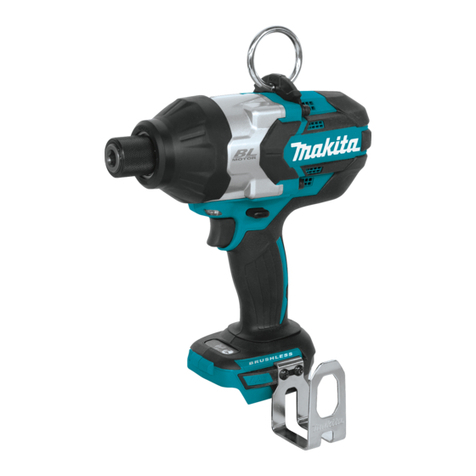
Makita
Makita XWT09 User manual
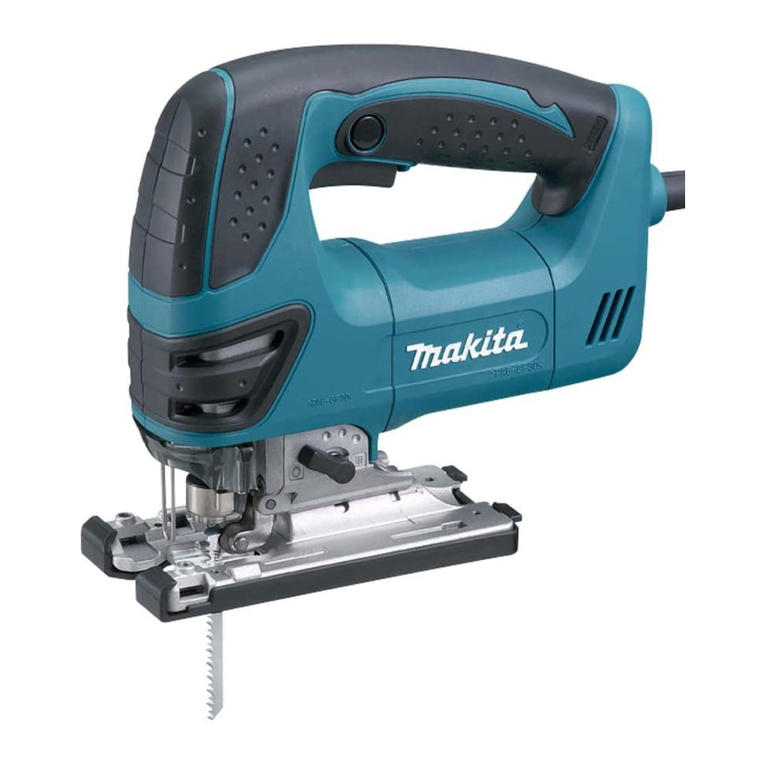
Makita
Makita 4350T User manual

Makita
Makita EX2650LHM User manual
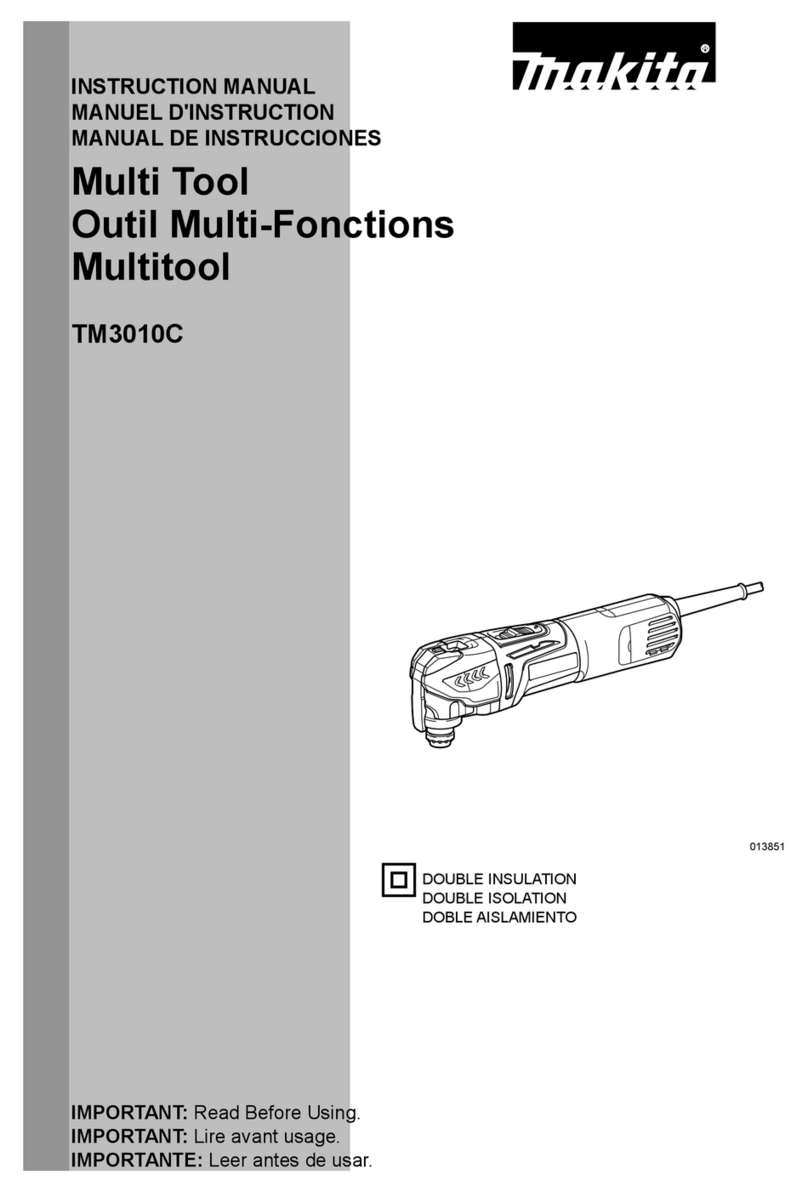
Makita
Makita TM3010C User manual
